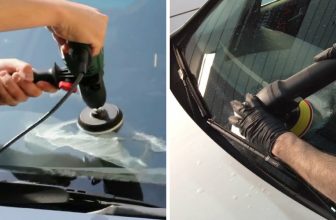How to Remove Oil From Windshield
Cleaning your windshield is an important part of car maintenance. To keep your visibility clear while driving, it’s important to remove any oil or residue that may accumulate on the glass. Unfortunately, like most drivers, you’ve had the unfortunate experience of getting oil on your windshield.
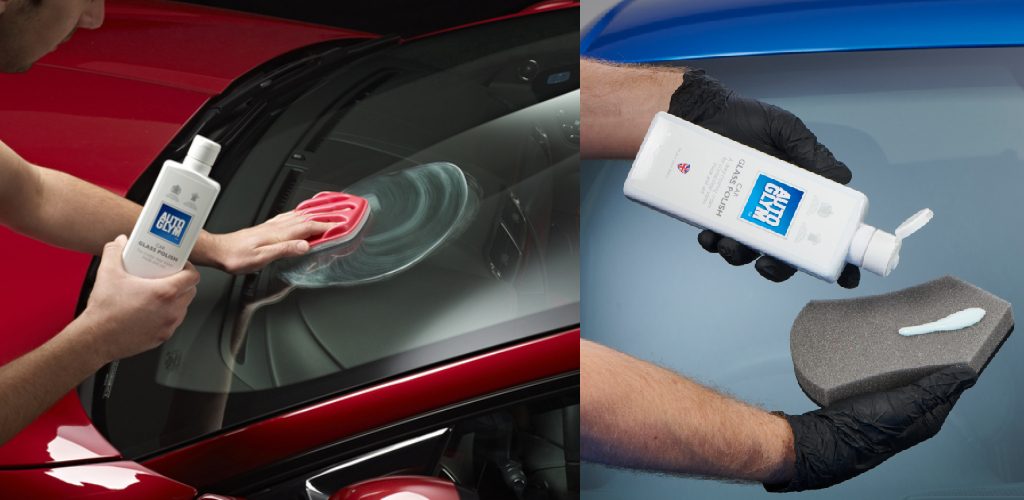
It can be difficult to remove and if not done correctly, can smear and cause damage. In this post, we’ll share some tips on how to remove oil from windshield quickly and easily. It’s a fairly simple process, but there are a few things you need to know before getting started. So, without further ado, let’s get started!
What is the Best Method for Removing Oil From the Windshield?
There are a few different methods that you can use to remove oil from your windshield. Some may be more effective than others, depending on the type of oil and the severity of the residue. Here are some commonly used methods that you can try:
Vinegar and Water Solution:
This method is simple and effective and uses household ingredients that you likely already have in your kitchen. Simply mix equal parts of white vinegar and water in a spray bottle. Spray the solution onto the affected areas of your windshield and let it sit for a few minutes before wiping it away with a clean cloth or paper towel.
Rubbing Alcohol:
Rubbing alcohol is another effective method for removing oil from your windshield. Simply soak a clean cloth in rubbing alcohol and rub it onto the affected areas. Then, wipe away with a clean cloth or paper towel.
Glass Cleaner:
If you have a commercial glass cleaner on hand, this can also be used to remove oil from your windshield. Spray the cleaner onto the affected areas and let it sit for a few minutes before wiping it away. Make sure to use a clean cloth or paper towel to prevent any smearing.
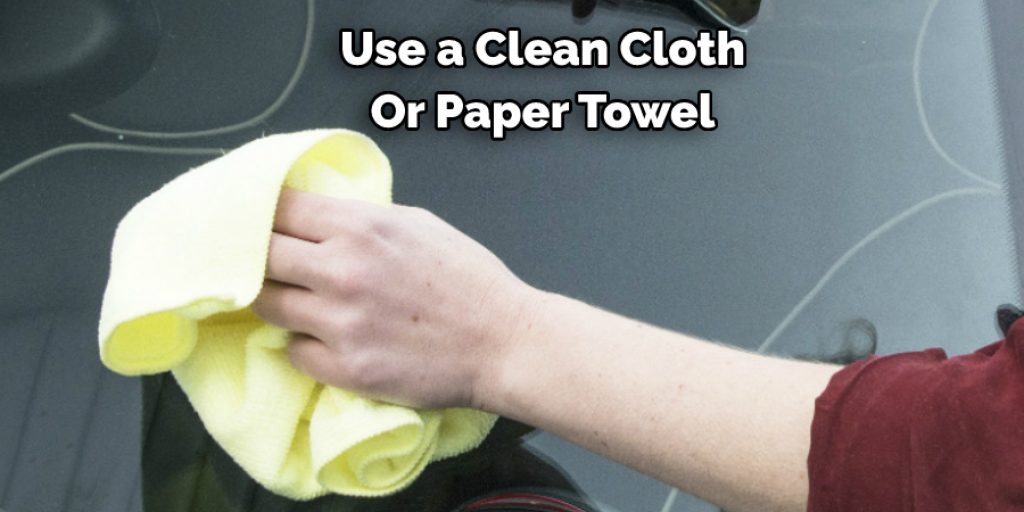
Baking Soda and Water Paste:
For tougher oil stains, you can make a paste using baking soda and water. Apply the paste onto the affected areas and let it sit for a few minutes before wiping it away with a clean cloth or paper towel. This method may require a bit more elbow grease, but it is effective for removing stubborn oil residue.
10 Simple Ways on How to Remove Oil From Windshield:
1. Prepare Your Area:
Move the car into a well-lit area where you can easily see your work area. Grab a drop cloth and place it over your driveway or garage floor to protect it from oil stains. Make sure to also have all of your cleaning supplies nearby. Otherwise, you may have to leave the area and risk getting oil on other parts of your car. It’s also a good idea to wear gloves to protect your hands from the cleaning agents.
2. Combine Basic Ingredients:
Fill a bucket with warm water and mix in dishwashing liquid (about one teaspoon for every gallon of water). Mix thoroughly. Avoid using scented dish soap as this may attract animals to the scent. Instead, pour the soapy mixture into a spray bottle or garden sprayer if you have one. You may also use a commercially available car cleaning solution, but the dish soap mixture works just as well.
3. Remove the Oil:
Wipe away the oil with a sponge or towel. Then, saturate it in a soapy water solution. Keep wiping and rinsing until you remove as much of the oil as possible. If you have a garden sprayer, utilize it to help flush out excess oil by spraying down your windshield and surrounding areas with water. This will help loosen and remove any remaining residue. It’s important to do this step as quickly as possible before the oil hardens and becomes more difficult to remove. You may also need to use a scraper for larger amounts of oil.

4. Dry the Surface:
Wipe dry your windshield and surrounding areas using a clean cloth or paper towel. Be sure to get into all the cracks and crevices of your windshield, such as around the wipers and wiper wells. Allow this area to dry completely before driving again. It’s important not to leave any excess water or cleaning agents on your windshield, as this can cause streaking and smearing. You may also use a squeegee to help with the drying process. The drier the surface, the cleaner your windshield will be.
5. Perform a Quick Detail-Clean:
After you have removed the majority of the oil from your windshield, perform a quick detail clean to remove any leftover residue. Perform this task just as you would if your car was being detailed. First, spray a small amount of detailing spray on a microfiber towel and wipe down all your car’s surfaces. Be extremely careful around your windshield and windows to avoid smearing the oil. Next, spray another microfiber towel with glass cleaner to clean your windows and windshield the same way you would if you were cleaning them to prevent streaking.
6. Remove Stubborn Grime:
If there is still a residue on your windshield or you want to take extra precautions, grab a can of WD-40 and spray it directly onto the glass. Spray the glass cleaner over this area once more and wipe it down with a clean microfiber towel. Allow drying completely before driving again. WD-40 works effectively to break down stubborn grime and residue, making it easier to remove. It also leaves a protective barrier on your windshield, preventing future dirt and debris from sticking as easily. You may also use this method as a preventative measure before oil residue becomes an issue.
7. Use Ammonia:
Mix two cups of water with one tablespoon of dishwashing liquid. Mix thoroughly to remove any residue or foam. Pour this mixture into a spray bottle. If you have tinted windows, this mixture will cause your tint to fade over time, so avoid spraying it directly onto the glass. If you have no other option but to use this mixture, spray it onto a cloth and wipe the glass down. Then, immediately spray a clean microfiber towel with glass cleaner and wipe the area dry. Mix this solution in a ratio of 1:3 (ammonia to water) for best results.
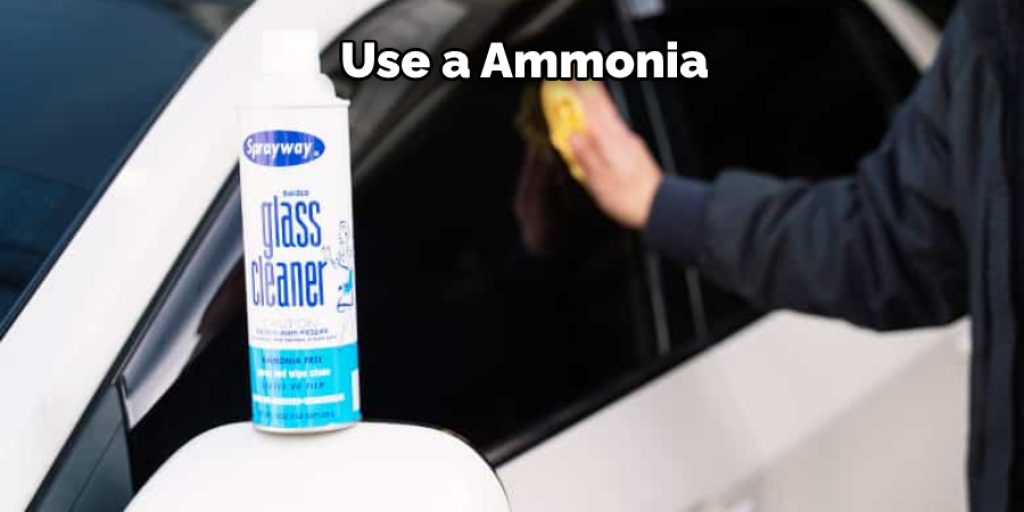
8. Try White Vinegar:
Pour white vinegar into a spray bottle for one part vinegar to four parts water. Spray the windshield directly, then use your cloth or paper towel to wipe it clean. Then, spray the glass cleaner directly onto your cloth or paper towel and wipe down your windshield for a streak-free shine. The acidity of the vinegar helps to break down the oil and make it easier to remove. If you have a particularly stubborn oil stain, you may also let the vinegar sit on the affected area for a few minutes before wiping it away.
9. Try WD-40:
Spray WD-40 directly onto the oil stains on your windshield. Wipe away any excess residue with a clean microfiber towel. If there is still grime on your windshield, spray some WD-40 directly onto a clean microfiber towel and wipe down the glass. Then, wipe the glass with a clean microfiber towel moistened with glass cleaner. This method is particularly useful for removing stubborn oil stains. However, be careful not to get WD-40 on any painted surfaces of your car, as it may cause damage. You may also want to avoid using this method on tinted windows.
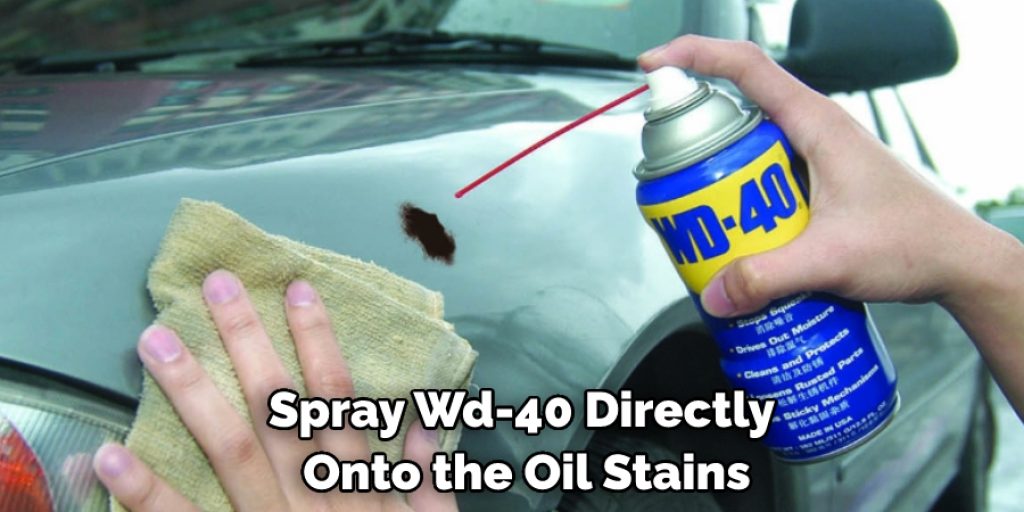
10. Clean Glass Preparation:
Clean your windshield and other windows with glass cleaner. Pay special attention to the rubber edging and surrounding areas, as they tend to trap the oil. Press a razor blade against the rubber edging to remove any excess dirt or grime that may have been missed during your cleaning. This will prevent the oil from spreading onto other parts of your windshield and car. Once you have removed all the oil, wipe down the rubber edging with a clean cloth to remove excess residue.
Following these steps will help you effectively and efficiently remove oil stains from your windshield. It’s important to act quickly, use the right cleaning agents, and thoroughly dry the surface to ensure a clean and streak-free end result.
Helpful Tips to Prevent Future Oil Spills From Staining Your Car:
1. The best way to avoid putting oil on your windshield is to keep it away from the engine. Take care (especially when parking) not to drip or spray oil onto your car’s exterior surface because you don’t want any part of that mess near your windshield wipers.
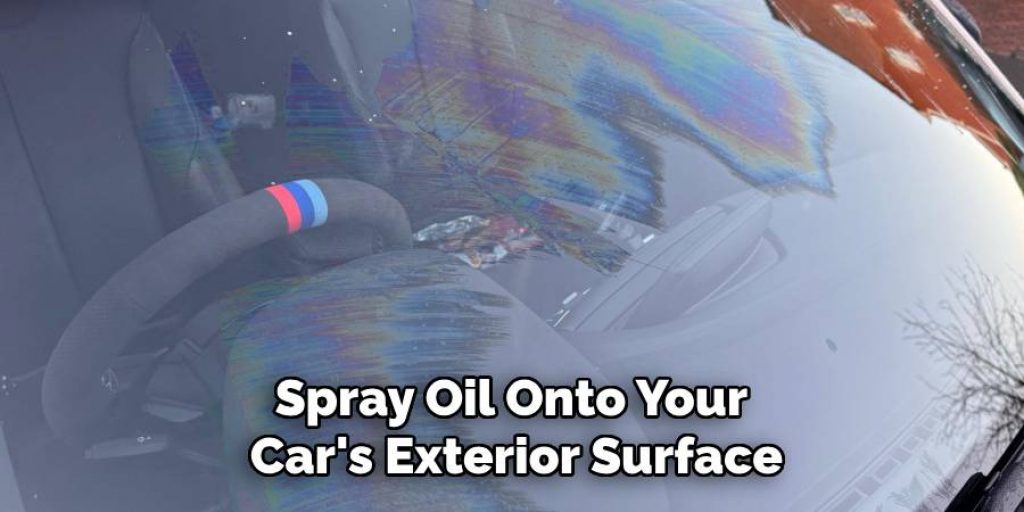
2. If you accidentally drop some oil into an area where it might come into contact with your windshield, wipe up any excess as soon as possible.
3. If you have a drip of oil on the outside of your car that makes its way to the windshield, try removing it as soon as possible (before it dries and becomes more difficult to remove).
4. Always keep your windshield clean. The windshield is usually the dirtiest part of your car, so if it gets dirty enough, you could end up with an oily film that makes it difficult to see through. Keeping it clean will allow you to identify if the oil has spilled onto the glass before it becomes a problem.
5. If you end up with oil on your windshield, turn on your windshield wipers to get rid of it. Under no circumstances should you try scrubbing at the oil with a paper towel because this could scratch the glass and damage your wiper blades (making them less effective).
6. If you end up with oil stains on your windshield that are difficult to remove, try using a specifically designed product for cleaning glass.
7. If the oil is still leaking onto the ground after you’ve wiped up all of it from your car, look under your car for any signs of leakage before calling a mechanic or the dealership where you purchased your car.

How Do You Protect Your Windshield?
Windshield wipers and a good windshield wiper fluid can save time and trouble by helping you see better when it’s raining, sleeting, or snowing. They also help protect your car from costly damage if all or part of the glass is damaged.
You might even be able to avoid a collision with another vehicle if the glass is in good repair. This doesn’t mean you can neglect your wipers or fluid, though. You may not think about it often, but the windshield wiper blades are an important safety feature of your vehicle.
It’s important to regularly clean and replace your windshield wiper blades to ensure they are functioning properly. Keeping them in good condition will also help prevent damage to your windshield and improve visibility during inclement weather.
In addition, using a high-quality windshield wiper fluid can help protect your windshield from dirt, debris, and oil buildup. It’s recommended to use washer fluid with added cleaners and solvents that can effectively break down oil and grime on your windshield.
You Can Check It Out To Lock Lexus Without Key
Frequently Asked Questions:
Q: How Often Should I Clean My Windshield to Prevent Oil Stains?
A: It is recommended to clean your windshield at least once a week to prevent the buildup of grime and dirt, which can make it easier for oil stains to stick. If you notice an oil spill or drip on your windshield, it is best to clean it as soon as possible. You can also use a windshield cleaner specifically designed to remove oil stains and clean your windshield regularly. But if you live in an area with frequent oil spills or your car is prone to leaks, it is best to clean your windshield more often as needed.
Q: Can I Use a Regular Glass Cleaner to Remove Oil Stains on My Windshield?
A: While a regular glass cleaner may work for minor oil stains, it may not be effective for heavy buildup. It is best to use a cleaner specifically designed for removing oil stains on glass. These cleaners often contain stronger and more effective ingredients that can break down and remove tough oil stains without damaging your windshield.
Q: Can I Use Vinegar or Ammonia to Clean My Windshield?
A: Yes, vinegar and ammonia are both household products that can also be used to clean your windshield. However, it is important to dilute these products with water and avoid using them on tinted windows as they can cause fading over time. It is also recommended to use glass cleaner after using vinegar or ammonia for a streak-free shine.
Q: How Do I Remove Stains from My Windshield Wipers?
A: Over time, your windshield wipers can accumulate dirt and grime which can contribute to oil stains on your windshield. To remove these stains, simply wipe down your wipers with a cloth or paper towel soaked in glass cleaner. Make sure to clean both the rubber blades and metal arms of your wipers for best results.
Q: What Should I Do If Oil Keeps Leaking onto My Windshield?
A: If you have a persistent oil leak in your windshield, it is important to address the issue as soon as possible. Check under your car for any signs of leakage and consult with a mechanic or dealership if needed. In the meantime, regularly clean your windshield to prevent the buildup of oil stains and use protective measures such as parking away from potential sources of oil leaks. By taking these steps, you can protect your windshield and ensure clear visibility while driving. That way, you can stay safe on the road and maintain a clean and well-maintained car.
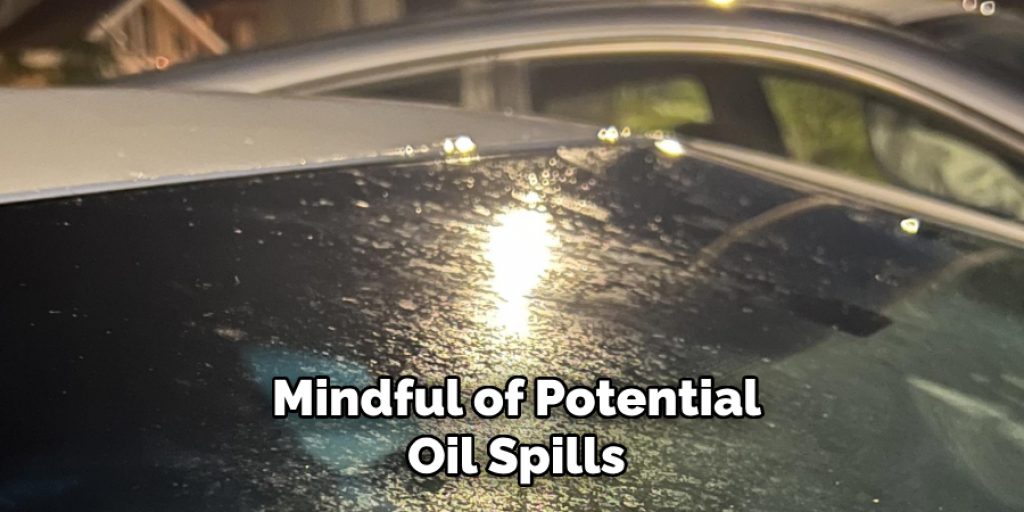
Remember to always be mindful of potential oil spills and take immediate action to prevent them from staining your windshield. With regular cleaning and proper maintenance, you can keep your windshield in excellent condition and enjoy a clear view of the road ahead. So next time you fill up on oil or park under a potential source of leakage, don’t forget to take these helpful tips into consideration to protect your windshield from becoming stained with oil. Keep safe and happy driving!
Conclusion:
In conclusion, a few methods can be used to remove oil from a windshield. The most effective method will vary depending on the type of oil present on the windshield. You can use a dryer sheet to remove oil from your windshield. The trick is in the fabric’s static cling and ability to attract oils like a magnet. Simply toss it into your washing machine for cleaning when you’re done!
We hope that this blog post has provided some helpful information about how to remove oil from windshield with ease, and we would love to hear any tips or tricks you have as well. By following the steps outlined in this article, you should be able to clean up any mess quickly and easily. Let us know what worked best for you by commenting below!
You can check it out to Drain Transmission Fluid Without Dropping the Pan




